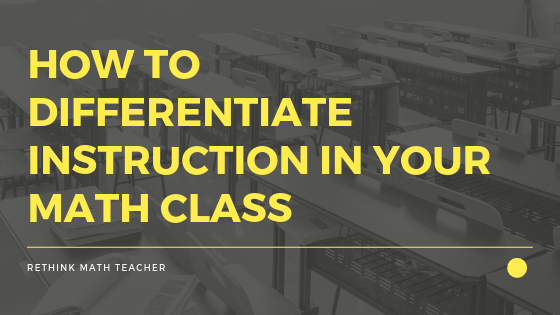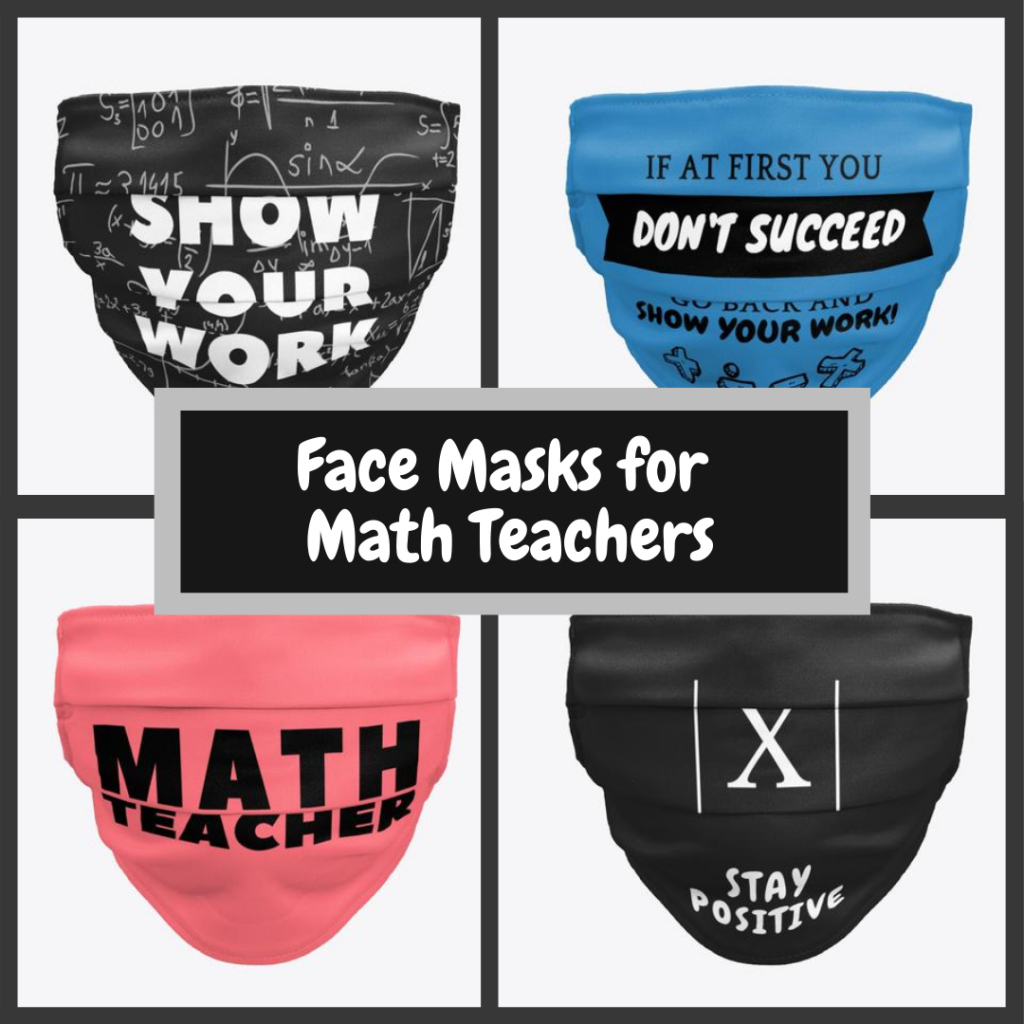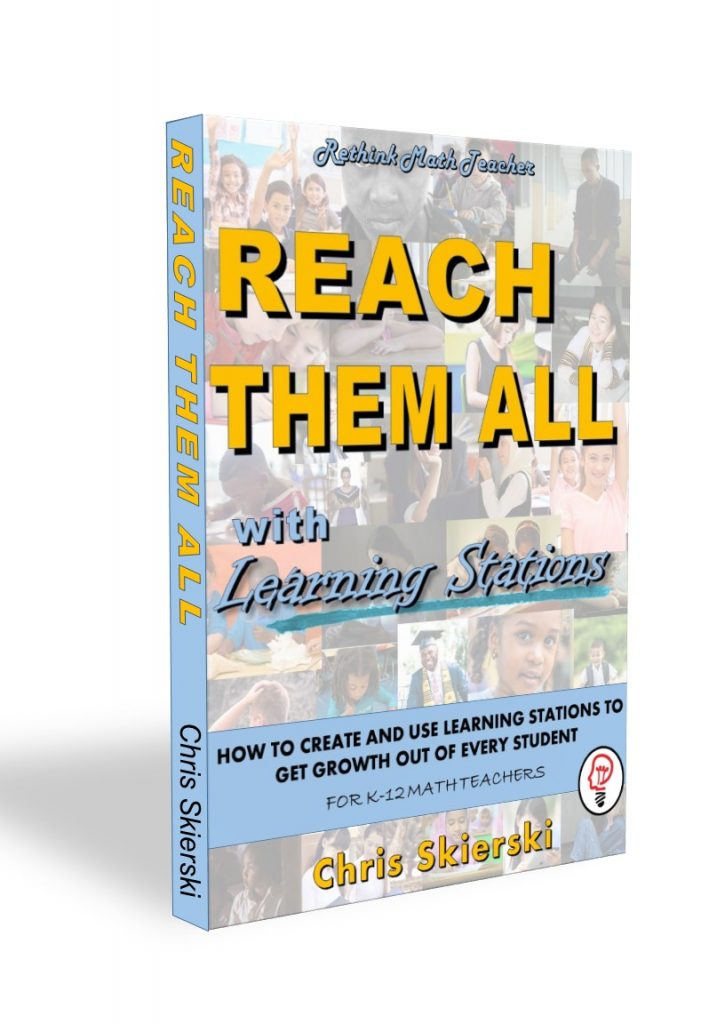
In “How to Differentiate Instruction in Academically Diverse Classrooms”, Carol Tomlinson says that there are three types of ways to differentiate your instruction. You can differentiate the content you present to your class, the process of how students comprehend the material (learning styles), or the product that the students must produce to demonstrate mastery.
These three types of differentiation are great for all classes. However, I would like to emphasize one as most valuable in the math classroom.
The Most Valuable Differentiation Strategy
Remember that in your math class your students will be accountable to the end of year diagnostic if you work in a public school (so will you). And if you work in a private school, you must be preparing your students for the SAT or ACT exam.
Thus, while alternatives assessments such as projects have their value, and can help students comprehend the material better; and accommodating different learning styles can also have a benefit, you still must prepare them to be able to take and pass a traditional, standardized assessment.
Furthermore, teaching to different learning styles or having students produce projects for alternative assessments won’t help students with the real problem that’s preventing them from mastering the content being taught.
The Real Problem
What is the greatest hindrance to your students? Why they are not finding success in the math class? Is it because they don’t do well on written assessments? Or is it because they are entering your class deficient in certain skills?
Another way of asking the question: Is the biggest issue facing the students in your class the fact that they enter your class behind where they should be academically?
The majority of students I have encountered and the majority of teachers and I have talked about this with would agree that the main issue is that our students enter our classrooms and are not prepared to do the grade-level work that we are supposed to be teaching them.
How can they do the work I am supposed to be teaching them when they haven’t mastered all the skills they need to do the work we’re working on?
For example,
- My students can’t do double-digit multiplication problems because they don’t know their times tables.
- My students can’t add mixed numbers because they don’t know how to simplify fractions or convert them to improper fractions.
- My students can’t do one step equations because they don’t understand how to add and subtract integers.
- My students can’t graph linear equations because they don’t understand slope.

The Solution
How can I service all of my students when they’re not all in the same place academically?
How can I get real growth out of all of my students when they all have different needs?
How can I teach the grade-level concept I’m supposed to when all of the students aren’t ready for it?
The answer to all these questions and many more is to differentiate our instruction based on what concept our students are working on so that we can remediate the skills they are lacking; so that they can do the grade-level work.
So if I am teaching my students how to solve double-digit multiplication problems, and I have students who do not know their times tables, I must remediate those students on that skill. And if some of the students can’t do double-digit addition, I must remediate them on that skill.
In the same way, if we are working on linear equations and my students don’t know how to graph points on a coordinate plane, I must remediate those students on that skill. And if other students can’t calculate or graph slope, then that must also be remediated.

What prerequisite skills should I remediate?
To figure out what skills should be remediated, you must first consider what prerequisite skills are required to do the grade-level work you are completing in class. Consider the examples above.
Often, especially in the upper grades, the number of prerequisite skills is more than one. Here’s a free worksheet to help you with this task.
How to Differentiate your Remediation
If you have multiple students working on multiple skills at the same time, you must build a learning station for each skill. At Rethink Math Teacher, we call this a ‘Skills-Based Learning Station.’
Each skills-based learning station focusses on equipping the student to master one skill. As students master the skill, they are progressed from one learning station to the next until everyone has mastered the grade-level standard.
By doing this, you are able to remediate all your weaker students while accelerating your stronger ones. No one is left behind, and no one is held back.

Why it Works
By differentiating the content being presented to your students, the following benefits will take place
- Students will master the skill they’re working on without being left behind or progressed to the next skill before they are ready
- When they master that standard, they will truly be successful. Which will help them gain confidence and the desire to learn more
- You will start focussing on student growth
- Students will be given the time and practice repetitions they need to master the skill (regardless of their ability or learning difference)
- Classroom management will become easier as everyone is being challenged at the appropriate level
- Data collection will become natural and you will truly be implementing data-driven instruction
- Students’ academic success will be measurable and celebrated
How to Get Started with Skills-Based Learnign Stations
Download the Free Cheat Sheet on Learning Stations
Or get the book on Learning Stations
More Articles on Learning Stations
- Uncommon Teacher Challenge
- 7 Reasons to Differentiate your Instruction
- What is Differentiated Instruction
- Challenging Your Stronger Students While Reaching Your Weaker Ones
- How to Differentiate Instruction in Your Math Class
- Differentiated Remediation
- Plugging the Holes – Remediation that Works
- Why You Should Create Learning Stations








